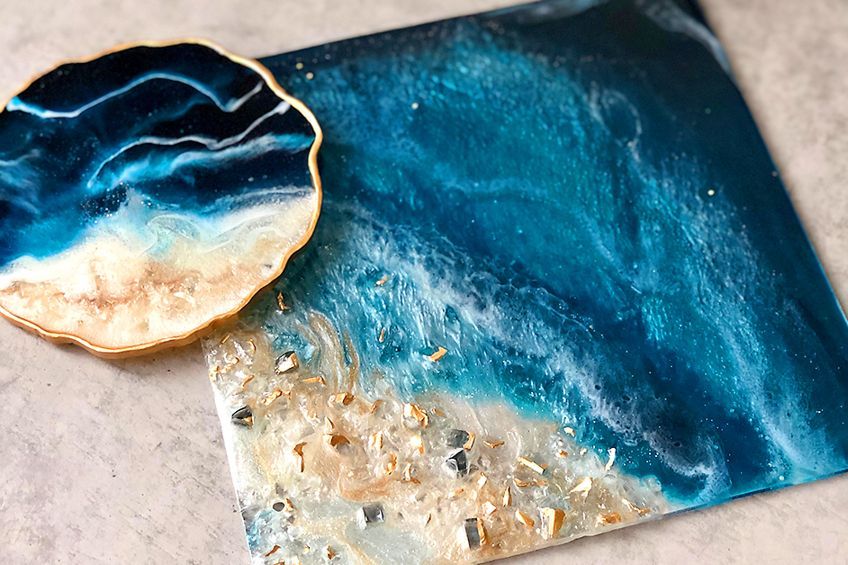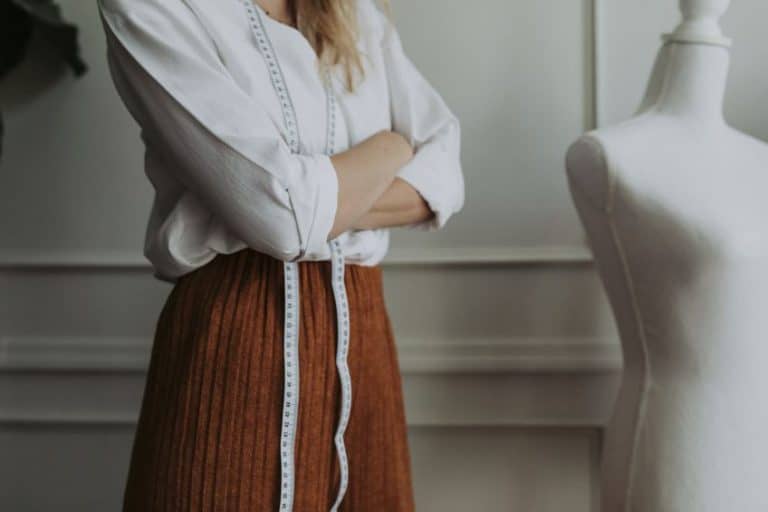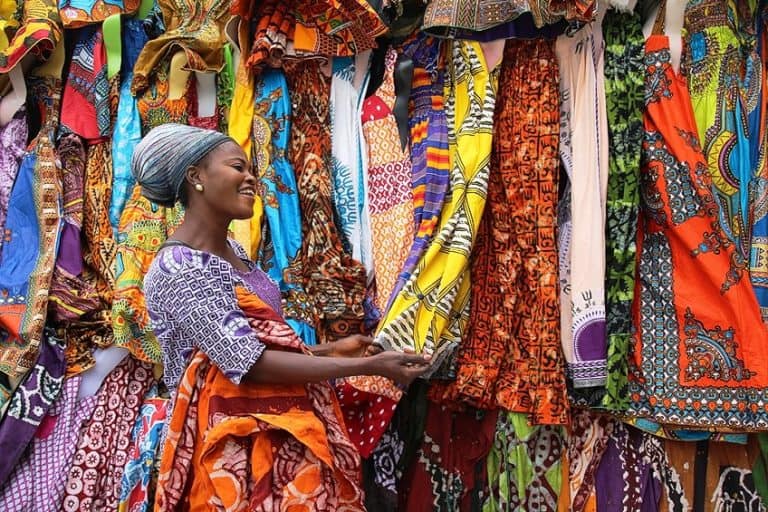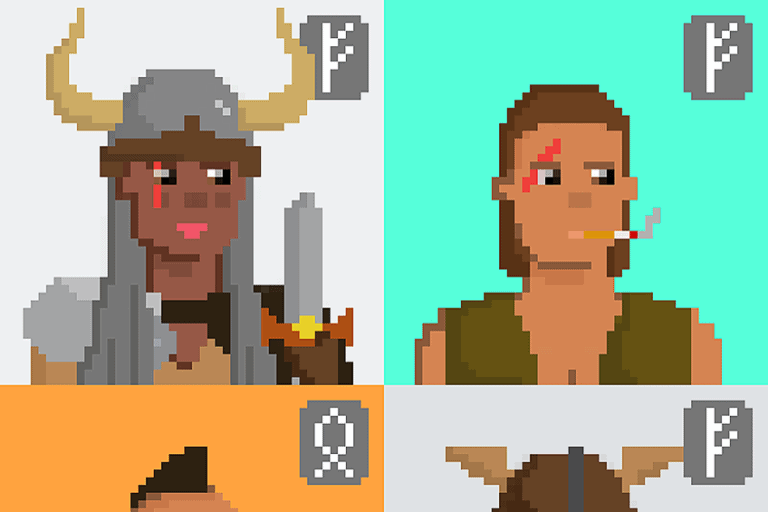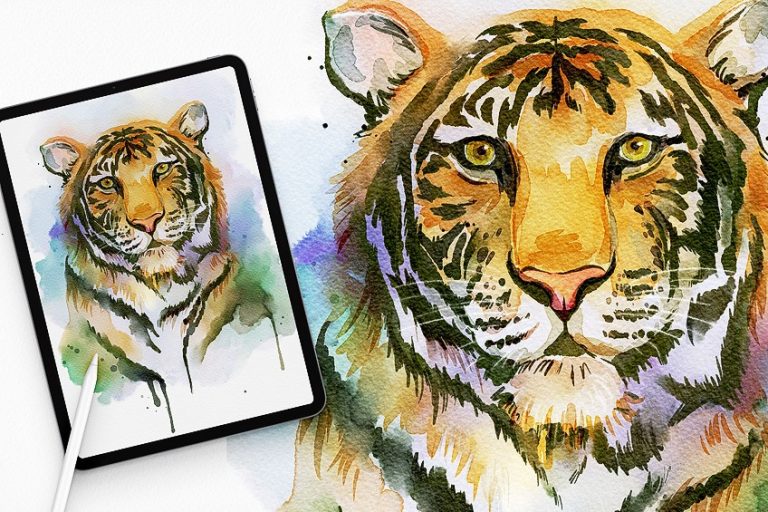Best Epoxy Resin – How to Find the Top Resin for Crafts and Art
There are loads of materials out there that make our lives easier. In the last 100 years or so we’ve discovered materials that have allowed us to go to space and more recent ones that allow us to carry little computers in our pockets. It’s been a revolutionary experience, and every day there are people all over the world working on new materials to make our quality of life even better. One of the best materials we’ve discovered in the last few decades has been epoxy resin, and with it, we’ve created everything from utensils to smartphones, to printers, and even paintings! What is epoxy resin though? Let’s have a look at what epoxy resin is and what some of the best epoxy resin products on the market are for a range of applications.
What Is Epoxy Resin and How Does It Work?
What is epoxy resin? So, there are a few ways to look at what epoxy resin is, and depending on the application in question epoxy resin can be a lot of different things to people in different professions. This being said, let’s have a look at what epoxy resin is as a material and what it can be used for before things get too complicated, shall we?
Put simply, and in the interest of saving you a trip to Wikipedia, epoxy resin belongs to a group of polymers known as prepolymers. The pre at the start of prepolymers hits that these specific polymer types are highly reactive to certain catalysts, which in turn have varying effects on these little guys. Put even more simply? Epoxy resin is a group of base polymers, that when mixed together with different substances like alcohols and acids form something new. You can find out more at the info blog from resin-expert.com.
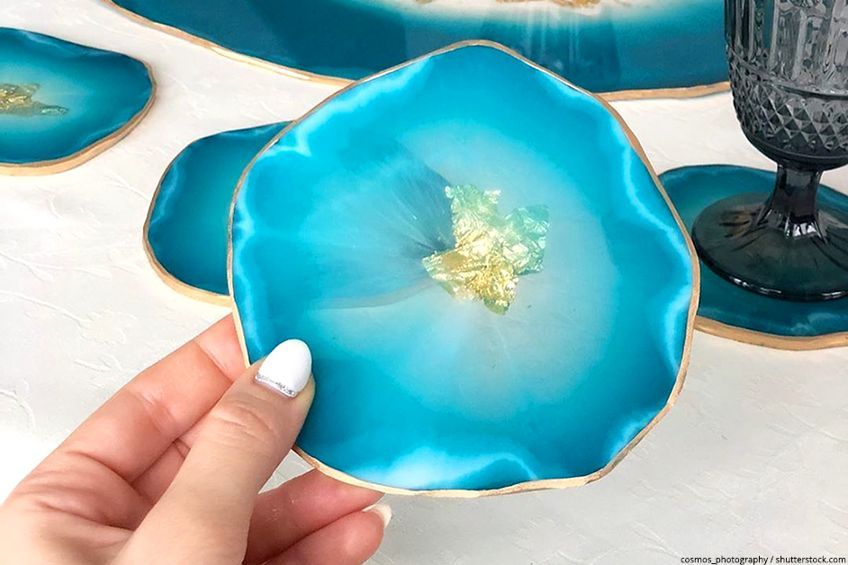
Pretty cool right? What’s even more interesting is how these polymers react with these other substances. You see, when they’re mixed together, they typically form what is known as a thermosetting polymer, which in layman’s terms simply means that they produce heat. When that heat dissipates, you are left with a solid poly plastic that is not only immune to heat but to chemical damage, impact, abrasion, and even UV damage.
If we were to try and paint an image of this for you, you could think of it as making your own plastic by mixing two substances together, except your plastic would be nearly impossible to melt, won’t be affected by chemicals, and you can shape it into any form you want. Sounds pretty simple in theory, right? Well, it is, but the practical aspect is a bit more nuanced and requires some practice.
Now that you know what epoxy is as a substance and how it forms plastic, you might be curious about how it works in everyday life.
It’s pretty simple actually, all you need to do is get your hands on an epoxy resin kit. These usually contain two substances in two separate containers, one contains resin and the other hardener. All you need to do is mix the resin and hardener together and throw them into a mold of your choice or you could even use them to coat a surface.
Different Types of Epoxy Resin
There are different types of epoxy resin out there, each of which is used in different industries for different applications. The best epoxy resin often isn’t the one with the best quality materials or even the best overall characteristics, but one that is suited for a given application. This being said, let’s have a look at the different epoxy resins on the market, their unique characteristics, and what they are used for.

UV Epoxy Resin
UV resin is one of the coolest types of resin on the market. Why? Well, conventional epoxy resin is mixed together (one-part resin and one-part hardener) and then thrown into a mold or onto a surface to cure. This process takes around 12 to 24 hours to ensure that the resin is cured completely and is ready for use. UV resin works a bit differently. Instead of the resin and hardener reacting with one another to cure the resin into its hardened state, UV resin relies on UV light (either sunlight or a UV bulb) to act as a catalyst for the resin to harden.
This is ideal for time-sensitive projects that simply don’t have time to allow for the conventional epoxy resin to harden and cure over the course of a few hours.
Crystal Resin
Crystal resin and epoxy resin are essentially the same thing, but they have some key differences, primarily in their intended applications and their fully cured states. Epoxy resin is usually used to make relatively crude forms or as a protective coating for surfaces and/or objects. Crystal resin on the other hand is usually used to make things like resin jewelry or aesthetic surface coatings. Why are they used for different applications you ask? Well, epoxy resins usually have an acceptable finish when cured, but it’s not very clear and castings can appear hazy.
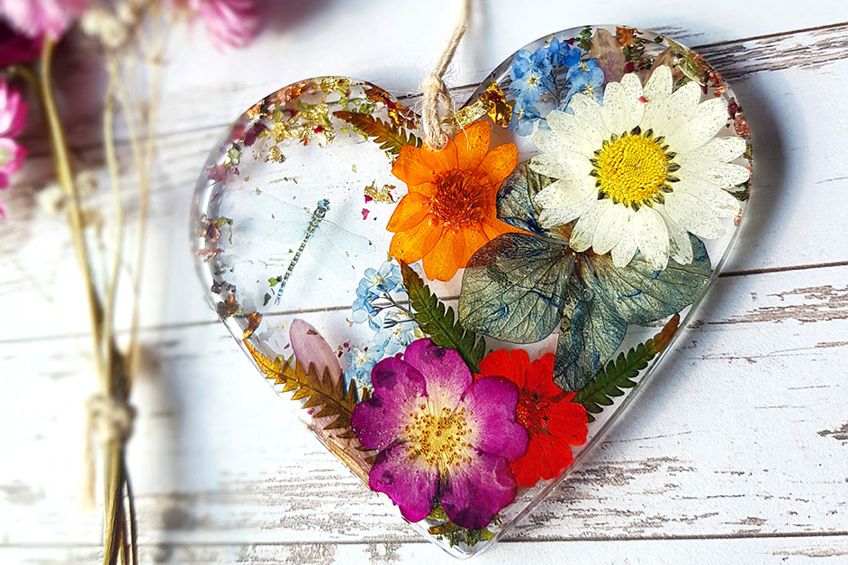
This is why color additives are often used with regular epoxy resin when casting artwork. Crystal resin, on the other hand, resembles glass when fully cured, this is why it’s often used to make resin jewelry or coat things like paintings and puzzles. Its commonly known as clear resin epoxy, and there are loads of YouTube tutorials showing you loads of amazing things that you can create clear resin epoxy. You could make things like earrings, photo frames, glasses, and even fully functional light bulbs if the mood took you.
Epoxy Resin
You could think of epoxy resin as your favorite brand of potato chips. Sure, there are loads of amazing flavors in the line-up, but they wouldn’t be there if it wasn’t for the original. In this case, epoxy resin is the original, lightly salted, version of all the resins we have looked at thus far. Epoxy resin has been around since the 1930s and has been used in so many applications it would take a few hours to cover them all.
Epoxy is simple to use, highly customizable, and completely food safe once cured, making it one of the most versatile substances on the face of the planet.
Some notable applications that resin has been used in are vehicle manufacturing, electronics, mechanical engineering, aerospace engineering, installation artwork, painting, construction, home maintenance, kitchen appliances, utensils, and even the weatherproofing of structures.
Marine Resin
Water is pretty much the one thing that makes all life on this planet possible, but it can be challenging to work with especially if something needs to be submerged into it. Here’s where marine resin comes in, it’s also known as polyester resin, and has been used in the construction and insulation of marine vessels for years.

It’s been used to create hauls and overhead coverings due to its ability to repel and insulate structures from water, and the fact that it sticks to pretty much anything you need it to. It does take some skill to work with though as it’s commonly used in combination with carbon fiber to not only make water fairing vessels waterproof but to reinforce haul integrity and stiffness.
Deep Pour Resin
If you’ve never used resin before it’s fairly easy to come to the conclusion that all resins are basically the same and therefore can be used interchangeably, aside from when a certain characteristic is required. While there are exceptions, this isn’t true for the most part. For example, if you’re creating a resin casting with a depth of more than two inches, conventional epoxy resin just won’t cut it. Why? Epoxy resin has a really thick consistency, which makes it easier to pour in small volumes. However, this characteristic counts against it when your mold is really deep.
This is where deep pour resin comes in handy, its consistency is thinner, which means it can pour much more of it without risking the resin curing incorrectly or clumping together too much.
This difference in viscosity means that you can pour up to two inches or more using this resin which is ideal for larger resin casting projects. If you’ve ever seen tabletop resin designs or resin river tables, this is the type of resin that is used, often in really large quantities. Also, because of the difference in consistency, deep pour resin is poured in a 3:1 ratio (three parts resin and one part hardener) as opposed to epoxy resins 1:1 ratio.
Polyurethane Resin
While there are many resin types out there, few are as widely used as polyurethane resin and its subsequent castings. Polyurethane (PU) is one of the most versatile resin substrates across virtually every industry on the planet. You can find things cast from this resin in production facilities, on packing machinery, in skateboard wheels, shopping trolley wheels, kids toys, and even furniture. This type of resin is not typically used on the consumer end of the industry, as synthesizing it does take some technical know-how and knowledge of the required properties for a given application.

This being said, finished castings can be purchased and used for a variety of applications, or you could commission polyurethan castings to be made for you for various applications. This can be a lot more expensive compared to going into a store and picking up an epoxy resin kit as you will have to tell the manufacturer the tolerances and conditions required for the application you have in mind, along with the measurements and margins for expansion and contraction. Knowing this, it’s probably best to stick to an epoxy resin kit if you aren’t up to date on your practical chemical engineering.
Silicone Resin
All of the resin types we’ve looked at so far have been used to create castings or coat surfaces for protection, but silicone resin is a bit different. Silicone resin is heat resistant, flexible, shock-resistant, and has great shape retention. These characteristics are why silicone resin is used to make resin molds instead of the resin castings themselves. The cool thing about working with resin is that you aren’t limited to the molds sold in store, you can create your own molds using silicone resin simply by coating the object you’d like to replicate in silicone resin and allowing it to cure.
Once cured, remove the silicone from the object and you should have a perfect negative of the object in question.
Silicone resin works a lot like epoxy resin does, all that you need to do is mix the silicone resin with its catalyst in the manufacturer’s recommended ratio, mix it together well, and apply it to the object you’d like to replicate. This is often how objects were duplicated cheaply before the advent of 3D printing.
Acrylic Resin
Acrylic resin is one of the coolest resin types out there and one of the hardest to work with. Acrylic resins are well known for being used as a clear epoxy resin for crafts but have applications far beyond merely being used for crafting. Acrylic resins are used for things like aquarium glass or looking glass in really high-end bathtubs. They have incredible tensile strength and can be fused to a surface on a molecular level or fused together with other acrylic resin forms to create what resembles seamless glass.

This type of resin is highly resistant to impact and abrasion and does not yellow from pronged exposure to UV light. This means that it’s often used in heavy-duty display applications. One of the most interesting parts about acrylic resin is that it can be found in one-part and two-part variants, although we should mention that it can be quite expensive in both instances. The one-part variation is called self-curing and is the more commonly used variation when seeking a clear epoxy resin for crafts.
What Type of Resin to Use for Certain Applications
Now that you know about some of the commonly used resins on the market, we’d like to show you which resins are best for certain applications. Not all resins are created equal though and considering that there are hundreds of resin products on the market, we’ve also included some of the highest quality resins for each application should you need one for a future project.

Best Epoxy for Resin Tables: POURABLE PLASTIC Deep Pour Resin
While this isn’t typically a beginner resin project, deep pour rein projects are really fun to make and they produce some of the most beautiful resin art creations out there today. When people talk about deep pour resin, they’re talking about any casting that is 2 inches in depth or more. This type of casting requires deep pour resin because it is thinner in consistency which allows you to pour more of it without compromising the ability of the resin to cure correctly.
The deep pour resin from the Pourable Plastic team is one of the best epoxy resins for crafts that require deep pour to be executed. Pourable Plastic also happens to be one of the most reputable brands in the epoxy resin industry, they’re actually a Canadian company called Magic Resin which specializes in resin products for both professional resin users and aspiring DIY enthusiasts.
- Deep pour epoxy is perfect for river tables and other casting jobs
- The epoxy is low-odor and safe to use when liquid and when cured
- Mixes well with pigment powders and cures crystal clear
What makes this one of the best epoxy resins for crafts that require deep pour resin? Well aside from its ability to create really high-quality castings with little to no air bubbles, this resin is actually one of the few resins that contain no volatile organic compounds (VOCs) and have no odor so you never have to worry about pungent odor distracting you while you work.
It’s also really easy to use, there are no additional components to this deep pour resin, all you need to do is mix the resin and hardener in the manufacturer’s recommended ratio and pour it into the recesses of your workpiece. It’s also fully compatible with coloring agents like mica powder and acrylic paint which means your workpiece’s color pallet is completely customizable.
The Pourable plastic team hasn’t just focused on aesthetics and ease of use though. Their deep pour resin is also completely resistant to things like impact, abrasion, heat, and moisture which means you won’t have to worry about your workpiece incurring any damage if it’s placed in a highly trafficked area or around little ones with greasy fingers.
[su_shadow style=”simple”][su_panel]- Easy to use
- Versatile
- Impact and abrasion-resistant
- Handles heat and moisture well
- Contains no VOCs
- Low odor
- Reputable brand
- Suitable for beginners and professionals
- Expensive
- Sold in limited volumes
- No mixing/measuring cups included
- Long curing time
Best Epoxy for Resin Paintings: PROMARINE Supplies Art Resin
If you’ve had a look at the majority of resin art pieces, they’re typically really cool installation pieces or simple castings with practical applications like coasters or cutting boards. There are other resin art pieces though, and of the lesser-known forms of resin, the artwork is resin paintings. These paintings are often abstract and completely unique pieces that utilize canvases, wooden boards, cloth, and a variety of other materials to showcase the artist’s vision.
Finding the right resin for your resin paintings can be tough though as resins often vary considerably in price, quality, and consistency. Thankfully, there are resin products out there that are specially designed for use with resin paintings, and this one from the ProMarine team just so happens to be one of them. ProMarine has been in the resin game for a really long time, so you know that they have some of the best resins out there for a whole range of applications. What makes this resin so special though? Well, when you’re using resin to create resin art paintings consistency is one of the most important factors to consider when starting out.
- Perfect for professional artists and avid DIY enthusiasts
- Clear epoxy is made with non-toxic, premium-quality ingredients
- Formula is self-leveling with a high gloss and intense shine
This art supply resin from the ProMarine team ensures that each pour, whether you’re coating your art piece for protection or using resin in combination with acrylic paint to create your next masterpiece. Considering that you’ll be spending quite a bit of time working with this resin (likely leaning over your workpiece or easel) you might be worried about the accumulation of fumes in your workspace. Thankfully this resin from the ProMarine team is completely non-toxic, and they claim that it’s graded for both indoor and outdoor use, although we recommend always ensuring that you have adequate airflow in your workspace.
While we’re on the topic of protection, ProMarine seems to understand that your artwork might be subjected to harsh conditions every once in a while. Whether you’re working indoors or out in the sun, you can rest assured that ProMarine’s impact and UV-resistant formula will keep your work safe from harm. What’s more, is that their formula is self-leveling, so you never have to worry about lop-sided pours when you’re working with this product.
[su_shadow style=”simple”][su_panel]- Versatile
- Easy to use
- UV and impact-resistant
- High-quality sheen finish
- Ideal for coating and surface pouring
- Compatible with coloring agents
- Reasonably priced
- Contains no VOCs
- Produces excessive air bubbles
- Odor can be quite strong
- Sold in limited volumes
- Can be excessively sticky while curing
- Heat gun recommended removing excessive bubbles produced
Best Resin for Surface Coatings: STONE COAT Epoxy Resin Kit
In recent years resin has been used as a revolutionary creative means to make new forms that in years before would have been difficult if not impossible to create. This doesn’t mean that art is the only application that resin can be used for. In fact, the construction and home improvement industries have been using resin for many years to protect and beautify surfaces all over the world.
You see, resin happens to be one of the few materials that are both fire/heat resistant and easy to look at, which means it’s the go-to choice for many professionals and DIY enthusiasts when it comes to coating surfaces that will regularly be exposed to ambient or direct heat. It also happens to be relatively inexpensive, so you can use it in large volumes without having to fork out an arm and a leg. What is arguably the best resin product for this application is the countertop resin coating range from the Stone Coat team.
- It offers a durable, glossy finish that provides superior scratch resistance and UV protection
- Designed for easy application
- Ideal for protecting various surfaces including countertops, tabletops, and bars
They have successfully designed a formula that is easy to use and ensures that all of your stone and/or composite countertops are sealed and protected from things like stains, heat damage, as well as impact and abrasion. This sleek resin finish is not only good for protecting your countertops but produces a near crystal clear finish that will have you admiring your reflection when you aren’t busy cooking up a storm in the kitchen. It also happens to be fully customizable which means you can use color additives like mica powder, acrylic paint, or alcohol-based dyes to make your countertops unique.
It can be concerning to think that a substance like this will be present in your kitchen where foodstuff might come in contact with it. Thankfully, you can rest assured knowing that this product is not only food-safe once completely cured, but contains absolutely no VOCs which means you won’t risk inhaling any toxic fumes while you’re busy applying a new finish to your countertops!
[su_shadow style=”simple”][su_panel]- Easy to use
- Completely UV-resistant
- Resistant to heat, moisture, impact, and abrasions
- Provides a sheen finish
- Completely free of VOCs
- Completely food safe
- Sold in one and two gallons
- Self-leveling formula
- Can be used with coloring agents
- No mixing cups included
- Expensive
- Only sold with a crystal finish
- Produces excessive air bubbles
- Coloring agents can cause the resin to become murky in appearance.
Best Resin for Floor Coating: MASTER PROTECTIVE COATINGS Epoxy
As we mentioned previously there are loads of industries that make use of epoxy resin as a cheap, easy, and effective means of protecting surfaces from harm. One of them happens to be the home improvement and construction industry, which uses it not only to coat things like countertops and cupboards but interior and exterior floorings too!
That’s right, you can use resin to protect a wide range of flooring surfaces, including wood, stone, concrete, masonry, and even brick. Adding resin to your flooring creates a protective layer to prevent things like scuff marks, scratches, and dents from damaging your flooring. This is great considering that flooring is one of the most expensive replacements or maintenance jobs you can do in a home. What makes this resin special though? Well, the Master Protective Coatings team has been making protective coatings for all manner of resurfaces for years.
- Industrial grade epoxy resin is durable against acid and yellowing
- The formula has 100% solids and is self-leveling for easy use
- Perfect for any kind of industrial, commercial, and residential use
They pride themselves not only on their existing line of products but in their pursuit to research and develop new and innovative protective coatings for every occasion. They’re also pretty committed to limiting their carbon footprint by only using solvents and other substances that are completely free of VOCs, which is a tall order considering that it can be hard to find resin coating that doesn’t contain any VOCs these days. It’s pretty safe to say then that this Canadian-based manufacturer is pretty committed to quality and sustainability.
This philosophy seems to translate directly into their clear epoxy resin coating for floors which is virtually bulletproof. This coating is highly resistant to damage, being immune to impact, abrasion, heat, moisture, insect infestation, acid, and even yellowing caused by excessive exposure to sunlight. This particular variation of their formula covers between 200 and 300 square feet, which means it’s perfect for both commercial and industrial applications.
[su_shadow style=”simple”][su_panel]- Easy to use
- Graded for commercial and industrial applications
- Contains little to no VOCs
- Resistant against impact, abrasion, heat, moisture, UV damage, acid, and insect infestation
- Can be sued both indoors and outdoors
- Graded for use on most flooring materials
- Self-leveling formula
- Only solid-based formulas used
- Covers large surface areas up to 300 square feet
- Only sold in one volume (three gallons)
- More epoxy than hardener
- No mixing container included
- Aimed at use on concrete primarily
How to Use Epoxy Resin Effectively
While knowing what products are best for epoxy resin projects is great, it won’t do you much good unless you know how to use your epoxy resin products effectively. This is why we have prepared a short tutorial for you detailing how to use epoxy resin correctly, as well as how to prepare your workpieces and some safety tips. Enjoy!
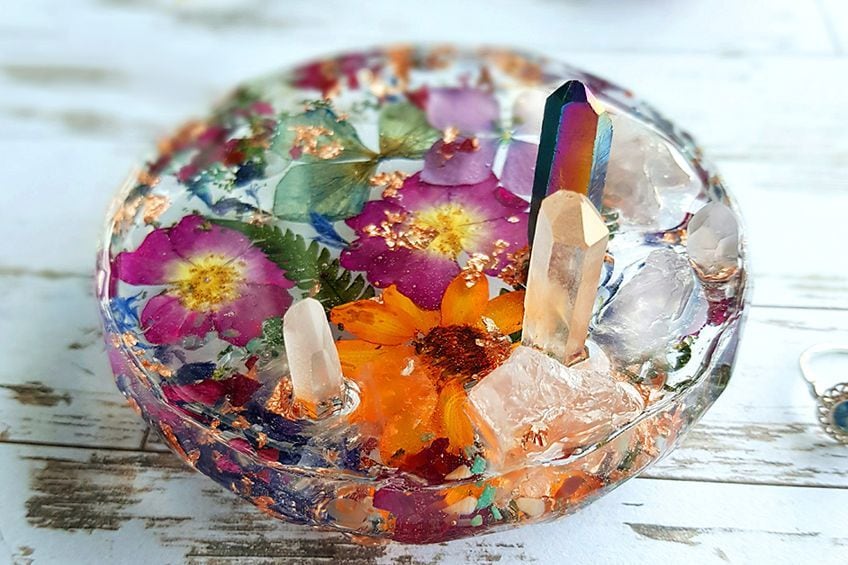
Always Protect Your Work Area
Even though epoxy resin is in no way corrosive, it can be really difficult to get off surfaces that you might have accidentally spilled it on. It’s for this reason that whenever you’re working with epoxy resin, whether it be conventional or otherwise, to cover up not only your work table but the floor in your work area too.
A large tarp or some old newspaper will do, and feel free to use some painter’s tape to ensure that they don’t move while you’re working.
Always Mix Your Resin as Directed
Doing something enough times means that you eventually develop a certain level of skill and confidence. This can sometimes lead to you deviating from instructions either to speed things up or to alter the consistency of your resin. Keep in mind that resin is specifically designed to work in accordance with the chemical composition stated by the manufacturer and deviating from things like mixing ratios or ideal conditions can lead to your resin not curing correctly or not curing at all.

This being said, most resin products need to be mixed in a 1:1 ratio with the exceptions of UV and deep pour resins which can require a ratio of 3:1 or 2:1 respectively depending on the manufacturer. These ratios are extremely important and failing to follow them as directed could mean that your resin does not cure correctly; in which case you’d likely have to remove your resin from the mold and start the process over again.
Ensure That Your Surfaces Are Clean
Whether you’re creating resin casting in a mold or coating a surface for protection, it’s important to make sure that the surface in question is clean before starting. Why? Well, dust particles and even loose pieces of the surface itself may cause your resin to cure incorrectly, or worse, might get stuck in your resin casting!
This is why it is important to clean all surfaces with some soap and water and allow them to dry completely before using your resin on them.
Other than cleaning the surface you should also ensure that your mold is adequately prepared to receive your resin. How do you do this? Depending on the type of materials that your mold is made of you might need to add some mold release spray or anti-adhesive gel to it to ensure that once your casting is cured, all you have to do is stretch the mold to pop it out, instead of picking it out which could damage both the mold and your casting.
Always Ensure That You Are Working Safely
Working with resin can be a lot of fun, and it can be easy to forget that you’re working with substances that more often than not contain harmful chemicals called VOCs. You should do your utmost to protect yourself against these chemicals by wearing the correct personal protective gear such as a mask, gloves, and eye protection. If raw resin and/or hardener lands on your skin, eyes, or in your airways it can cause serious discomfort.

Besides covering up sensitive areas, you should ensure that your workspace is adequately prepared for working with resin too. We’ve already mentioned that you should protect your surroundings by means of a tap or some old newspaper, but it’s equally important to ensure that your workspace is well ventilated and has sufficient airflow to dissipate any fumes.
Now that you know what resin it, what resin can be used for, what types of resin are out there, what they are typically used for, and how to use your resin products effectively, it’s time for you to get out there and put your new-found knowledge to the test. Remember to always wear the appropriate personal protective gear and to ensure that your workspace is well ventilated when working with any resin product.
Frequently Asked Questions
Where to Buy Epoxy Resin for Crafts?
Wondering where to buy epoxy resin for crafting? Well, there are many craft and DIY stores out there that usually stock a wide variety of resin products, but they can vary considerably in price and quality. Using online stores like Amazon allows you to compare prices and quality reviews which could save you some time and money in the future.
Can You Use Clear Resin for Crafts?
Can you use clear resin for crafts? Yes! If you like the look and feel of crystal resin, there are loads of resin crafts that you can make using it. One of the most popular uses for clear resin is in the making of resin jewelry which can range from rings to necklaces, to earrings, and even tiaras!
What Is the Best Epoxy Resin?
What is the best epoxy resin? While there are epoxy resins that are extremely versatile and form high-quality castings, the best resin objectively is the one that is best suited to the application at hand. Therefore, there will never be a resin that is universally best, that’s why there are loads of resin types for you to choose from to suit given surfaces and/or environments.
What Is the Best Epoxy Resin for Crafts?
What is the best epoxy resin for crafts? Crafting usually requires a resin to be malleable, customizable, able to handle color, as well as being easy to use. Taking these characteristics into account, the best epoxy resin would have to be general-purpose crafting resin which is often sold in kits, along with molds, mixing containers, and even things like glitter and resin dye.
In 2005, Charlene completed her Wellness Diplomas in Therapeutic Aromatherapy and Reflexology from the International School of Reflexology and Meridian Therapy. She worked for a company offering corporate wellness programs for a couple of years, before opening up her own therapy practice. It was in 2015 that a friend, who was a digital marketer, asked her to join her company as a content creator, and this is where she found her excitement for writing.
Since joining the content writing world, she has gained a lot of experience over the years writing on a diverse selection of topics, from beauty, health, wellness, travel, and more. Due to various circumstances, she had to close her therapy practice and is now a full-time freelance writer. Being a creative person, she could not pass up the opportunity to contribute to the Art in Context team, where is was in her element, writing about a variety of art and craft topics. Contributing articles for over three years now, her knowledge in this area has grown, and she has gotten to explore her creativity and improve her research and writing skills.
Charlene Lewis has been working for artincontext.org since the relaunch in 2020. She is an experienced writer and mainly focuses on the topics of color theory, painting and drawing.
Learn more about Charlene Lewis and the Art in Context Team.
Cite this Article
Charlene, Lewis, “Best Epoxy Resin – How to Find the Top Resin for Crafts and Art.” Art in Context. February 21, 2022. URL: https://artincontext.org/best-epoxy-resin/
Lewis, C. (2022, 21 February). Best Epoxy Resin – How to Find the Top Resin for Crafts and Art. Art in Context. https://artincontext.org/best-epoxy-resin/
Lewis, Charlene. “Best Epoxy Resin – How to Find the Top Resin for Crafts and Art.” Art in Context, February 21, 2022. https://artincontext.org/best-epoxy-resin/.


